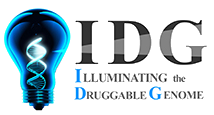Drug results: 16
| betaine | A naturally occurring compound that has been of interest for its role in osmoregulation. As a drug, betaine hydrochloride has been used as a source of hydrochloric acid in the treatment of hypochlorhydria. Betaine has also been used in the treatment of liver disorders, for hyperkalemia, for homocystinuria, and for gastrointestinal disturbances. (From Martindale, The Extra Pharmacopoeia, 30th ed, p1341) |
|
| folic acid | A member of the vitamin B family that stimulates the hematopoietic system. It is present in the liver and kidney and is found in mushrooms, spinach, yeast, green leaves, and grasses (POACEAE). Folic acid is used in the treatment and prevention of folate deficiencies and megaloblastic anemia. |
|
| levomefolic acid | an ingredient in Contraceptives, Oral, Combined |
|
| leucovorin | The active metabolite of FOLIC ACID. Leucovorin is used principally as an antidote to FOLIC ACID ANTAGONISTS. |
|
| cobamamide | ||
| octinoxate | a UV filter compound |
|
| tiagabine | The precise mechanism by which tiagabine exerts its antiseizure effect is unknown, although it is believed to be related to its ability to block GABA uptake into presynaptic neurons, permitting more GABA to be available for receptor binding on the surfaces of post-synaptic cells. |
|
| glycerol | A trihydroxy sugar alcohol that is an intermediate in carbohydrate and lipid metabolism. It is used as a solvent, emollient, pharmaceutical agent, or sweetening agent. |
|
| phenoxyethanol |
|
|
| benzoic acid | A fungistatic compound that is widely used as a food preservative. It is conjugated to GLYCINE in the liver and excreted as hippuric acid. |
|
| talc | Finely powdered native hydrous magnesium silicate. It is used as a dusting powder, either alone or with starch or boric acid, for medicinal and toilet preparations. It is also an excipient and filler for pills, tablets, and for dusting tablet molds. (From Merck Index, 11th ed) | |
| titanium dioxide | used medically as protectant against externally caused irritation & sunlight; high concentrations of dust may cause irritation to respiratory tract; RN given refers to titanium oxide (TiO2); structure |
|
| zinc oxide | A mild astringent and topical protectant with some antiseptic action. It is also used in bandages, pastes, ointments, dental cements, and as a sunblock. |
|
| aminobutyric acid | The most common inhibitory neurotransmitter in the central nervous system. |
|
| citric acid | A key intermediate in metabolism. It is an acid compound found in citrus fruits. The salts of citric acid (citrates) can be used as anticoagulants due to their calcium chelating ability. |
|
| xylitol | A five-carbon sugar alcohol derived from XYLOSE by reduction of the carbonyl group. It is as sweet as sucrose and used as a noncariogenic sweetener. |
|



